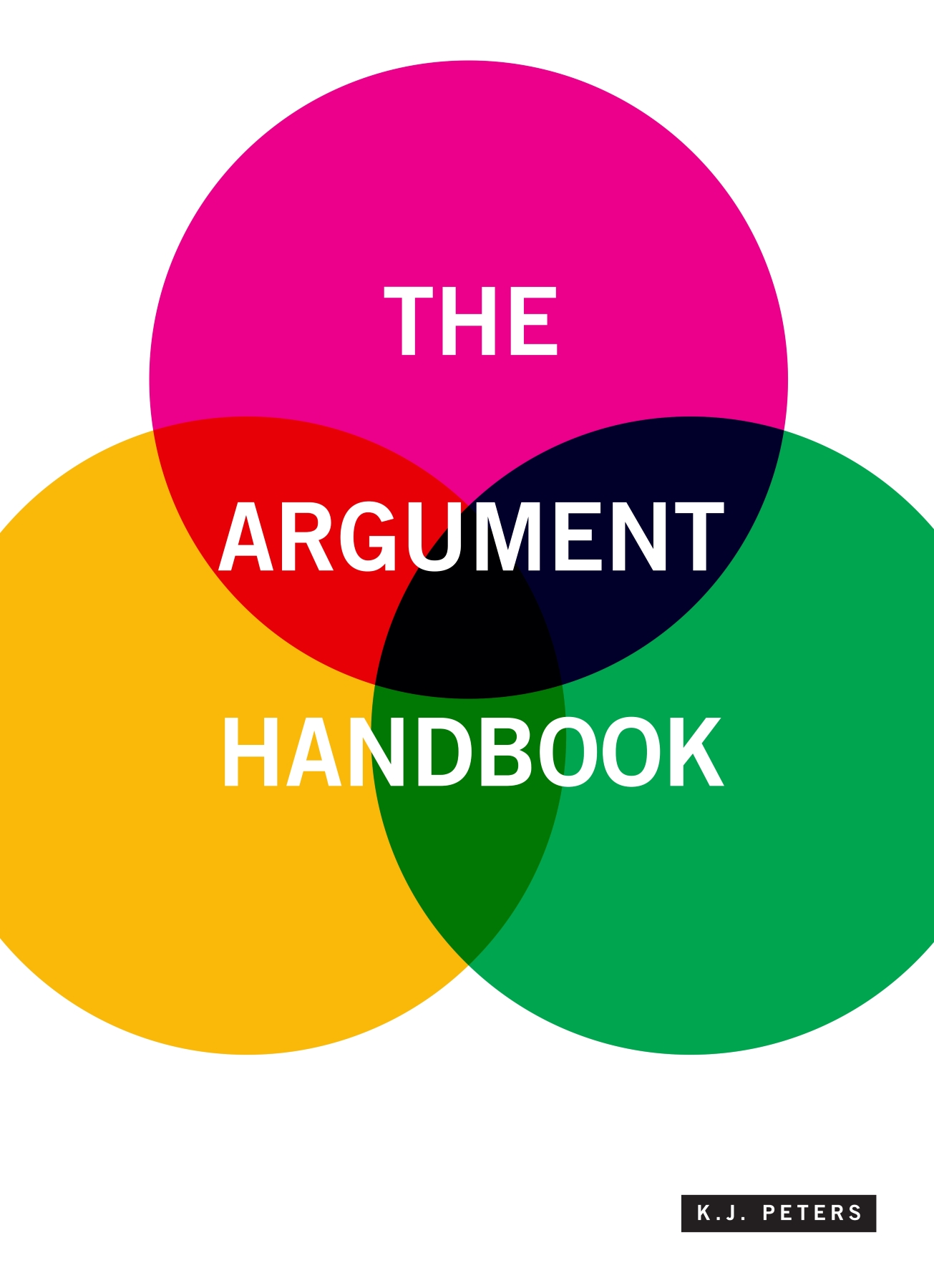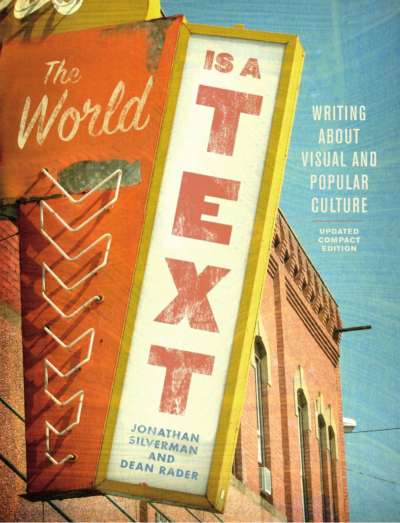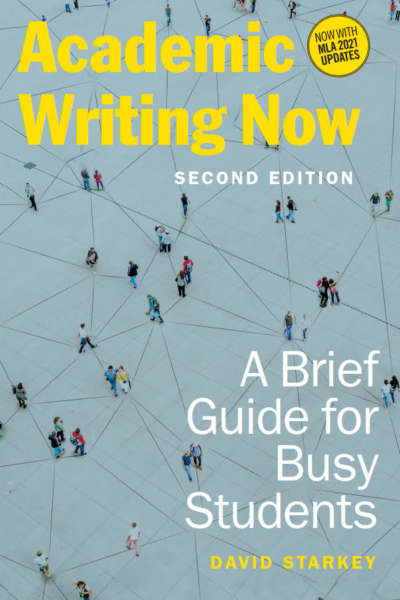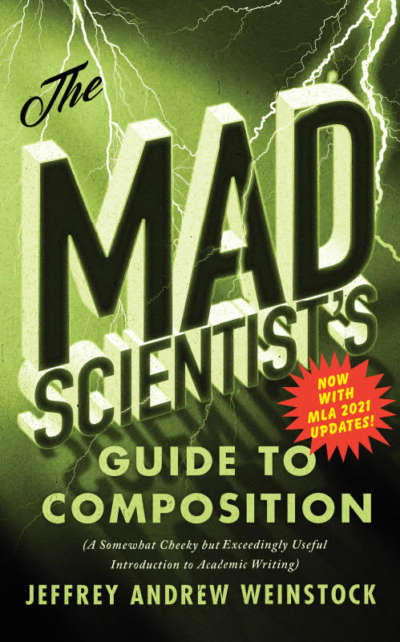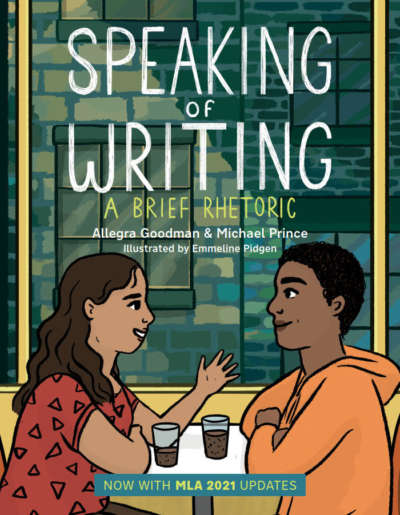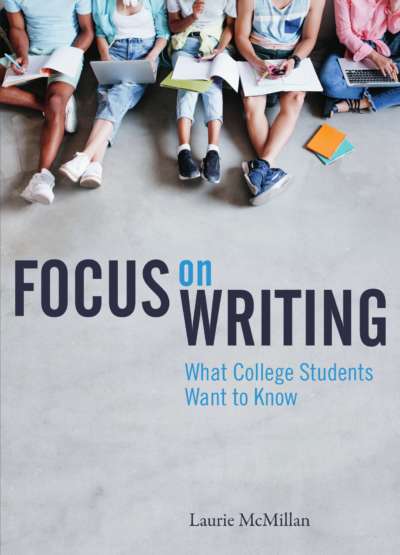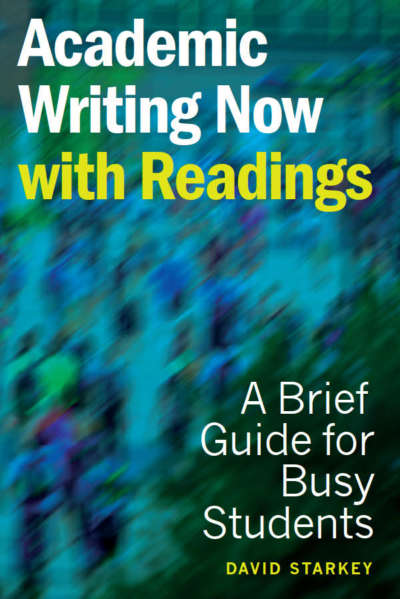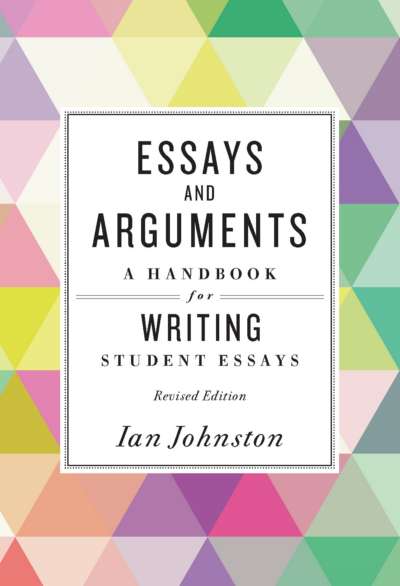The Argument Handbook is a classroom text for first-year composition that is designed to help students understand complex rhetorical situations and navigate the process of transforming private thoughts into persuasive, public writing. The book is organized around three key lenses of argumentation that help students focus on the practical challenges of persuasive writing: invention, audience, and authority. Its modular organization makes it easier for students to find what they need and easier for instructors to assign the content that fits their course.
Comments
“The Argument Handbook is a complete argument textbook. Students are systematically introduced to invention, audience research, genre—everything a rhetoric should have. Like any thorough treatment of argument, the Handbook is also readily adaptable for a variety of courses. Advanced writing classes will find it just as useful as first-year classes.” — Paul Lynch, Saint Louis University
“This book is well researched and insightful. In the current climate in which facts are questioned, all sides argue in the most heated fashion, and too much news is labeled as fake, thoughtful study of argumentation is necessary for a thorough education. Throughout the text, K.J. Peters recognizes the needs of various types of learners. The modular organization is flexible and allows changes of focus in the curriculum. Some of the modules concern methods of reading and analyzing arguments, a common focus of freshman courses. Within these genres, students can further see the importance of audience and purpose, of research, of planning, and of vivid language.” — Katherine H. Adams, Loyola University New Orleans
Preface
PART I INVENTION AND RESEARCH
Chapter 1 Assembling Arguments: An Introduction
- Module I-1: Argument Defined
- Module I-2: Invention and Research: How Will You Find Ideas and Evidence?
- Module I-3: Audience: Who Will Consider Your Argument?
- Module I-4: Authority: What Will Persuade Your Audience?
Chapter 2 Planning Your Writing and Research
- Module I-5: Making a Writing and Research Plan
- Module I-6: Framing Your Subject
Chapter 3 Looking Within and Around to Invent
- Module I-7: Why Take Time to Invent?
- Module I-8: Elements of Effective Invention
- Module I-9: Invention Strategies
- Module I-10: Moving from Invention to Drafting
Chapter 4 Looking to Research to Invent
- Module I-11: Why Use Research to Invent?
- Module I-12: Using Research to Find and Develop Ideas
- Module I-13: Searching Efficiently
PART II TYPES OF ARGUMENT
Chapter 5 Understanding Argument Forms and Genres
- Module II-1: Why Do I Need to Know Forms and Genres?
- Module II-2: Using Forms and Genres to Help You Invent an Argument
- Module II-3: Using Forms and Genres to Discover Audience Expectations
- Module II-4: Using Forms and Genres to Establish Authority
Chapter 6 Using Stasis Questions to Build Arguments
- Module II-5: Why Do I Need to Know Stasis Questions?
- Module II-6: Primary and Secondary Stasis Questions
- Module II-7: Building an Argument Using Stasis Questions
Chapter 7 Persuading
- Module II-8: What Audiences Expect of a Persuasive Argument
- Module II-9: A Persuasive Genre: Advertisement
- Module II-10: A Persuasive Genre: Reflection Paper
- Module II-11: A Persuasive Genre: Opinion Piece
- Module II-12: Building a Persuasive Argument
Chapter 8 Analyzing Arguments
- Module II-13: What Audiences Expect of a Rhetorical Analysis
- Module II-14: A Rhetorical Analysis of a Photograph
- Module II-15: A Rhetorical Analysis of an Opinion Piece
- Module II-16: Building an Effective Rhetorical Analysis
Chapter 9 Stating the Facts
- Module II-17: What Audiences Expect of a State-the-Facts Argument
- Module II-18: A State-the-Facts Genre: Research Paper
- Module II-19: A State-the-Facts Genre: News Article
- Module II-20: Building a State-the-Facts Argument
Chapter 10 Defining
- Module II-21: What Audiences Expect of a Definition Argument
- Module II-22: A Definition Genre: Opinion Piece
- Module II-23: A Definition Genre: YouTube Commercial
- Module II-24: A Definition Genre: Research Paper
- Module II-25: Building a Definition Argument
Chapter 11 Narrating
- Module II-26: What Audiences Expect of a Narrative Argument
- Module II-27: A Narrative Genre: Opinion Piece
- Module II-28: A Narrative Genre: Advertisement
- Module II-29: A Narrative Genre: Personal Narrative
- Module II-30: Building a Narrative Argument
Chapter 12 Analyzing and Evaluating
- Module II-31: What Audiences Expect of an Analysis and Evaluation
- Module II-32: An Analysis and Evaluation Genre: Blog Entry: Thrill-Ride Review
- Module II-33: An Analysis and Evaluation Genre: Online Restaurant Review
- Module II-34: An Analysis and Evaluation Genre: Review of a Cultural Event
- Module II-35: Building an Analysis and Evaluation Argument
Chapter 13 Determining Cause
- Module II-36: What Audiences Expect of a Causal Argument
- Module II-37: A Causal Argument Genre: Editorial
- Module II-38: A Causal Argument Genre: Political Cartoon
- Module II-39: A Causal Argument Genre: Research Paper
- Module II-40: Building a Causal Argument
Chapter 14 Proposing a Solution
- Module II-41: What Audiences Expect of a Proposal
- Module II-42: A Proposal Genre: Advocacy Speech
- Module II-43: A Proposal Genre: Pop-Up Advertisement
- Module II-44: A Proposal Genre: Position Paper
- Module II-45: Building a Proposal
PART III APPEALING TO YOUR AUDIENCE
Chapter 15 Understanding Your Audience
- Module III-1: Rhetorical Situation Defined
- Module III-2: Audience Defined
- Module III-3: Analyzing an Audience
- Module III-4: Using Appeals, Media, and Conventions to Influence Your Audience
- Module III-5: Common Academic Assignments: What Does Your Audience Expect?
Chapter 16 Understanding the Academic Situation
- Module III-6: What You Need to Know about Writing in Universities and Colleges
- Module III-7: The Humanities and the Liberal Arts and Sciences
- Module III-8: The Fine, Visual, and Performing Arts
- Module III-9: The Pre-Professional and Applied Sciences
- Module III-10: The Natural Sciences
Chapter 17 Using Classical Rhetoric
- Module III-11: Classical Rhetoric and the Writing Process
- Module III-12: Arrangement of Argument
- Module III-13: Types of Appeals
- Module III-14: Building Authority Using Classical Virtues
Chapter 18 Using Contemporary Rhetoric
- Module III-15: Using Toulmin’s Model to Analyze an Argument
- Module III-16: Using Toulmin’s Model to Build Counter-Arguments
- Module III-17: Rogerian Rhetoric Defined
- Module III-18: A Rogerian Argument: A Persuasive Paper
- Module III-19: Reaching Your Audience with Rogerian Rhetoric
PART IV CONDUCTING RESEARCH TO BUILD AUTHORITATIVE ARGUMENTS
Chapter 19 Using Databases and Search Engines
- Module IV-1: Building Authority with Search Engines and Databases
- Module IV-2: Using Databases and Search Engines
- Module IV-3: Organizing Your Research
Chapter 20 Evaluating Sources and Documents
- Module IV-4: Why Do I Need to Evaluate Sources?
- Module IV-5: How Do I Evaluate Sources?
- Module IV-6: Evaluating for Relevance
- Module IV-7: Evaluating for Authority
- Module IV-8: Evaluating for Honesty
- Module IV-9: Determining If a Source Is Questionable
Chapter 21 Integrating Research and Avoiding Plagiarism
- Module IV-10: Defining Plagiarism and Fair Use
- Module IV-11: Avoiding Plagiarism
- Module IV-12: Integrating Sources Authoritatively
- Module IV-13: Integrating Sources into an Argument: An Example
Chapter 22 Citing and Documenting Sources
- Module IV-14: How Documentation Styles Express Authority
- Module IV-15: MLA Style for In-Text Citations
- Module IV-16: MLA List of Works Cited
- Module IV-17: APA Style for In-Text Citations
- Module IV-18: APA List of References
PART V PROJECTING AUTHORITY
Chapter 23 Crafting Style, Voice, and Presence
- Module V-1: Building Authority with Style
- Module V-2: Building Authority with Voice
- Module V-3: Building Authoritative Presence
Chapter 24 Checking for Logical Fallacies and Flow
- Module V-4: Logical Fallacies Defined
- Module V-5: Awkwardness and Flow Defined
Chapter 25 Using Conventions Persuasively
- Module V-6: Using Visuals in Your Argument
- Module V-7: Using Design Conventions in Your Argument
- Module V-8: Creating Effective Presentations
- Module V-9: Proofreading Your Argument
Permissions Acknowledgments
Index
K.J. Peters is Professor of English at Loyola Marymount University. He has 15 years of experience directing first year writing programs and training graduate students, instructors, and professors of many disciplines in composition pedagogy and rhetorical theory.
For a sample chapter of The Argument Handbook, click here. (Opens as a PDF.)

